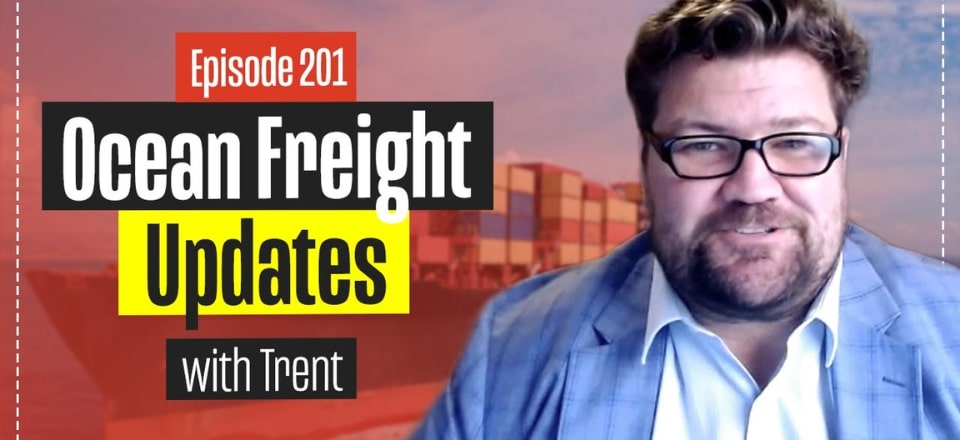In this video, Trent Morris and I dig into the latest trends in ocean freight from an international logistics perspective, with key insights from his time at the Trans-Pacific Maritime Conference.
We’ll talk about recent shifts in global shipping, where rates and reliability are headed, and how logistics managers can make the most of today’s market.
Watch the video below!
A few weeks ago, Trent attended the Trans-Pacific Maritime Conference in Long Beach, California, where shipping professionals gathered to discuss the state of the industry. It was a great opportunity to understand where the ocean freight market has been and where it’s heading. One of the key takeaways from the event was how the market is slowly returning to pre-pandemic conditions, with rates expected to approach those seen in 2019, with some fluctuation.
The Impact of COVID-19 on Ocean Freight Rates
The pandemic caused huge disruptions in the shipping world. For example, between 2020 and 2021, ocean freight costs surged by 50%. This spike in prices was mainly driven by booming demand from the e-commerce sector, alongside supply chain bottlenecks. Service reliability also dropped, which caused a lot of uncertainty for supply chain managers. But as the market settles, we’re seeing signs of recovery, with rates starting to return to more reasonable levels.
What’s Happening Now in Ocean Freight
The big question today is how to manage freight costs and disruptions. At the conference, experts highlighted that businesses should be locking in rates for critical products and taking advantage of low spot rates for others. Despite ongoing challenges, including occasional blank sailings by shipping lines to manage supply, it remains a buyer’s market. Keeping an eye on the market and adjusting your strategy as needed can provide significant cost-saving opportunities.
Looking Ahead: Long-Term Strategy in Ocean Freight
At Logistics Bureau, we are helping clients develop long-term strategies to better navigate the shifting landscape. A big part of this is understanding how to manage inventory effectively, considering low-cost origins and the positioning of inventory along the supply chain. Additionally, developing direct relationships with carriers provides more certainty in the face of market fluctuations and upcoming regulatory changes that may affect shipping practices.
Related articles on this topic have appeared throughout our website, check them out:
- 10 Freight Management Mistakes and How to Avoid Them
- Freight Benchmarking: What Is It? Why Do It?
- 12 Smart Ways to Reduce Your Freight Costs
Editor’s Note: The content of this post was originally published on Logistics Bureau’s website dated May 24, 2023, under the title “Ocean Freight 2023 Update with Trent Morris“.




